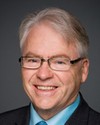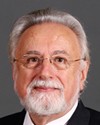Thank you.
Good morning, honourable members. It is a pleasure to be here today. We are honoured to be invited to present to the committee on this important topic of nuclear medical isotope supply from an industry perspective.
My name is Cyrille Villeneuve, and I am vice-president and general manager for Lantheus. Bill Dawes is with me as the vice-president of manufacturing and supply chain.
In our time here today, I would like to give you a very brief overview of Lantheus Medical Imaging, our operations in Canada, and an update on our perspective on the nuclear medical isotope supply situation and its impact on our customers and the patients they serve. Both Mr. Dawes and I will be available to answer your questions afterwards.
Lantheus Medical Imaging is a global, privately held U.S. company, based in North Billerica, Massachusetts. We specialize in providing medical imaging diagnostic products for heart and vascular disease. The company has been a leader in the nuclear medicine industry for more than 50 years, most recently as a division of Bristol-Myers Squibb.
We brought to market pioneer medical isotope products such as thallium and Cardiolite, both of which are used in nuclear medicine to diagnose patients for cardiovascular disease. We believe they are the leading products serving the field today. Cardiolite is most widely used in cardiac imaging, and is the only technetium-labelled myocardial perfusion that has been used to image more than 40 million patients in the United States alone.
In addition to having ten products on the market, Lantheus has a rich pipeline of cardiovascular imaging agents in development for the detection of coronary artery disease and heart failure, and they are also based on medical isotopes.
Lantheus employs more than 600 employees worldwide. We are a fully integrated company with strong research and development capabilities, world-wide manufacturing facilities, a strong distribution network, and dedicated employees. As a global company, we have operations not only in the U.S. but also in Canada, Puerto Rico, and Australia.
In Canada, the head office of Lantheus Medical Imaging is in Montreal. Lantheus employs more than 80 Canadians, including sales and marketing staff, customer service representatives and radiopharmacy staff. Lantheus' international operations are managed from Canada, by Canadian staff.
In addition, Lantheus operates five radiopharmacies in Quebec City, Montreal, Mississauga, Hamilton and Vancouver. At those radiopharmacies, we prepare single doses, injection-ready doses, and we deliver them twice daily to nuclear medicine departments and clinics located near our facilities. We are also currently creating a network of radiopharmacy sites for positron emission tomography or PET, which will allow the distribution of PET products to Canadians.
As you may already know, Lantheus and other manufacturers need medical isotopes called molybdenum-99 in order to produce the daughter isotope called technetium-99m. Technetium-99m is the most used medical isotope in the world. On an annual basis, it makes up 82% of radiopharmaceutical injections used for diagnoses, which is over 18.5 million doses per year. Technetium is a critical component for many medical exams, including cardiac pool scans, brain scans, bone, kidney and various tumour scans.
At Lantheus Medical Imaging, we use technetium in our TechneLite generators. These generators are distributed to hospitals and radiopharmacies as sources of technetium for diagnostic imaging. Technetium is also used with Cardiolite in cardiac imaging, in order to assist in the diagnosis of coronary disease in those who might be suffering from it.
All this to say that a serious and extended shortage of medical isotopes can have serious repercussions on the health and well-being of a great many patients. The fact that the Chalk River NRU reactor has been closed for repair since May 2009 has had a significant impact on our operations and clients in North America.
Lantheus has had the privilege of having a very diversified supply chain, and we are doing everything possible to meet the needs of our clients and the medical community in Canada and the United States given the worldwide shortage of molybdenum-99.
The company has amended its production schedule in order to be ready, upon request, once the supply becomes available. We are working 7 days a week, 24 hours a day, and during holidays, in order to provide technetium generators to our clients. We also have the advantage of having cyclotrons, in the U.S., and we have greatly increased our thallium production so that doctors can have access to an alternative imaging product if they are unable to have access to technetium.
We are working in close cooperation with our clients in order to advise them of current and short-term supply, through direct communication and updates that we publish on our website. Furthermore, we are in almost constant contact with our customers and the medical community on the issue of logistics and distribution.
A number of nuclear medicine departments have amended their schedule, in order to maximize the quantity of technetium that is delivered to them. They are using alternative imaging products such as thallium. They are being forced to prioritize, sometimes postponing exams and sometimes even restricting the number of patients.
Since the beginning of the medical isotope supply shortage, Lantheus' Canadian operation has had one objective: to ensure that as many patients as possible receive their treatments or diagnostic tests. To achieve this goal, we have identified and implemented a number of actions.
We are working closely with Health Canada and the other companies that operate commercial radiopharmacies to ensure that technetium generators and unit doses are utilized equitably. We coordinate distribution of unit doses to all customers to make sure that all customers have some product for imaging.
We continue to collaborate with provincial health authorities to try to provide a similar level of available unit doses to health institutions that do not have radiopharmacy service.
To maximize unit dose availability, we have extended our radiopharmacy working hours to include evening and weekend production to maximize the quantity of technetium that is available.
We have substantially increased the availability of thallium, a product manufactured in a cyclotron, as an effective substitute to technetium-based cardiac agents such as Cardiolite. A vast majority of our customers have switched to thallium in periods of technetium shortage, assuring us that a baseline level of cardiac testing for patients has been maintained.
The significant efforts that Lantheus is making to develop a network of positron emitting radiopharmaceutical, or PER, manufacturing sites across Canada will not only have an important impact on the availability of existing Health Canada approved PET products for the Canadian health care community, but it will also prepare the market for the introduction of future innovative PER technologies and effective research PERs, such as sodium fluoride and other F18-based compounds that could be made available in a CTA environment.
The isotope supply crisis has also raised interest in other newer technologies and imaging modalities such as PET imaging. Lantheus already distributes GLUDEF, F18 fludeoxyglucose, a product used in the evaluation of patients with suspected cancers. We manufacture GLUDEF through a manufacturing partnership with the University of Sherbrooke. Lantheus is in the process of expanding the availability of GLUDEF to other parts of the country, and it is actively working on commissioning two other production sites, at the Montreal Neurological Institute and the Lantheus Mississauga radiopharmacy. Our strategy is to expand the PER pharmacy network to other parts of Canada to more broadly serve the needs of the Canadian medical community in the future.
Since our international operations are located in Montreal, Lantheus has a number of major clients in Canada. We are extremely determined to meet the needs of the Canadian market and we are doing everything possible to ensure that Canada receives the largest possible share of available technetium during this difficult time of reduced supply of medical isotopes. However, many of the solutions we have already discussed are short-term measures intended as stop gaps until isotope supply becomes accessible once again.
Having the NRU reactor come back online would greatly assist in reducing the impact of the world isotope shortage, particularly in North America. Since the HFR reactor in the Netherlands was closed at the same time as the NRU reactor, the medical isotope shortage is being felt all the more, which demonstrates the importance of having access to accessible and diversified sources of supply throughout the world as well as the importance of cooperation between industry, regulatory bodies and project promoters.
We believe that the short- and medium-term solution to ensuring stable medical isotope supply for Canadians is to repair the NRU reactor as quickly as possible and to provide financial support to efforts to ensure that the licence is renewed until 2016.
At Lantheus Medical Imaging, we are extremely determined to work with our clients and their patients, our suppliers and government agencies in order to ensure a more stable supply of medical isotopes in both the short and long term for the medical community and for patients, for whom we are all working.
Thank you for giving us the opportunity to speak with you today. We greatly appreciate this privilege and we would be pleased to answer any questions you may have.









